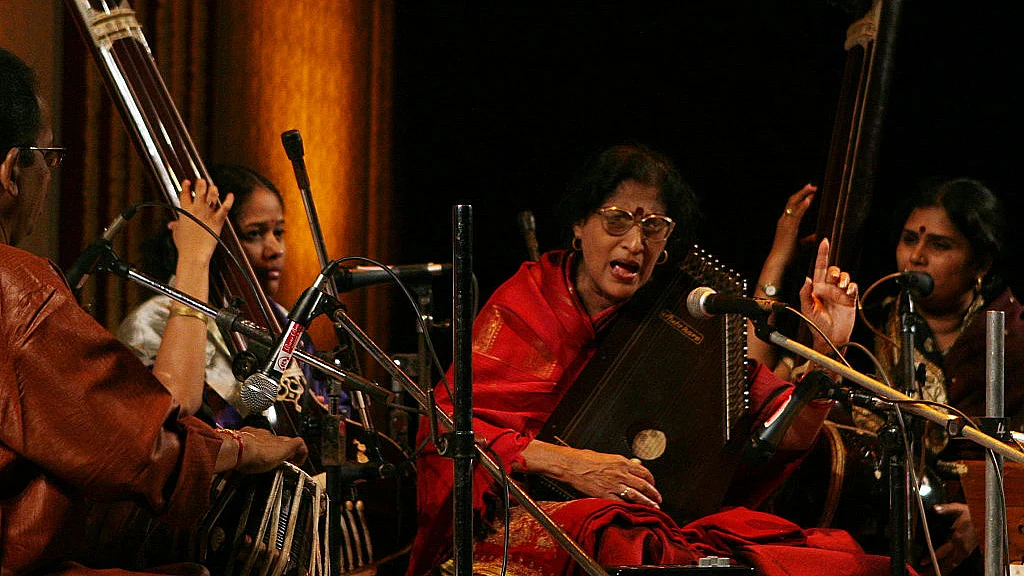Vocalist Kishori Amonkar passes away
Kishori Amonkar: the iconic classical vocalist passes away. The grand old lady of Hindustani Classical was revered as an epitome of creative freedom in music

Kishori Amonkar is no more. At 84, she passed away at her Mumbai apartment late night on Monday. She belonged to the Jaipur-Atrauli gharana of Hindustani classical vocal, which is well known for highly format driven khayal music and for its stress on the classicist nature of Hindustani classical.
Tributes poured in with Lata Mangeshkar being among the first.
She was more than a singer par excellence. She was an epitome of how an artist practices grammar of an art form and then, surpasses it to reach his/her own creation. And that creation goes beyond one art form. So, a painting can feel like a poem, a song be a painting and a painting can feel like a symphony.
The journey was not an easy one. At 25, she suddenly lost her voice. She could regain it only with the help of a saint in Pune, Sardeshmukh Maharaj, who treated her with Ayurveda. It took two years to regain that profound voice.
But this made her contemplate over the notes. How a single note is sung differently in a different raga and that is how she could discover shruti, concealed between the major notes of a raga, which actually is the soul of that raga and can invoke intense human emotions. That is how she started treating Ragas as persons and ‘friends’. Through music she reached the abstract to create an enthralling experience.
There were temperament issues too. She would not give interviews to journalists who don’t know/understand music. She would not sing to an audience which is not paying attention.
She had walked out of performances many times, had stopped in the middle because the microphones were not proper, almost always preferred not to have bright lights focused on her because that distracted her. Rightly so too. She had seen her mother not being respected by the organisers of the shows. She did not want any of that. And the kind of experience her singing offered, demands that kind of reverence and attention.
For people who are not fond of Hindustani classical and are yet keen on breaking the boundaries of technicality in art forms so that they can be enjoyed even by the uninitiated, Amonker will always be a great example of an iconoclast. She mastered the technicality of khayal gayaki and then went beyond it.
Of course, she was trained by her mother, legendary Mogubai Kurdikar of Ustad Alladiya Khan’s Jaipur Gharana. Mogubai was a strict Guru. She would sing the sthayi only twice for young Amonkar to copy and practice. That way, she made Amonkar concentrate on the notes. In an interview to the Indian Express, she once said that her mother did not ‘teach’ her, she made her do the ‘sadhana’. She also learnt from various other stalwarts of music like Anwar Hussain Khan of Agra Gharana and Sharadchandra Arolkar of Gwalior Gharana and Goa’s iconic Balkrishnbuwa parwatkar.
Tabla maestro Zakir Hussain once remarked that her music is like a painting that embodies every little detail of someone’s life. Her favourite raga was Bageshri. When she sang it, each note wove into an absolute trance reflecting perfect blend of emotions and grammar. One never knows when the grammar ends and pure beauty flows from the voice. In that she stood at par with Ustad Amir Khan.
The creativity and creative freedom, that she stood for, is in peril in today’s extra-touchy-purist-nationalist-aggressive environment. But her lone voice undulating through the rustling breeze of early morning will always keep instilling creative zeal in those who aspire to reach beyond the already framed experiences.
Follow us on: Facebook, Twitter, Google News, Instagram
Join our official telegram channel (@nationalherald) and stay updated with the latest headlines
- Goa
- Pune
- Kishori Amonkar
- vocalist
- Hindustani Classical
- Jaipur gharana
- Atrauli gharana
- Lata Mangeshkar
- Sardeshmukh Maharaj
- Ayurveda
- khayal
- Mogubai Kurdikar
- Ustad Alladiya Khan
- Anwar Hussain Khan
- Agra Gharana
- Gwalior Gharana
- Sharadchandra Arolkar
- Balkrishnbuwa Parwatkar
- Zakir Hussain
- Bageshri
- Ustad Amir Khan
